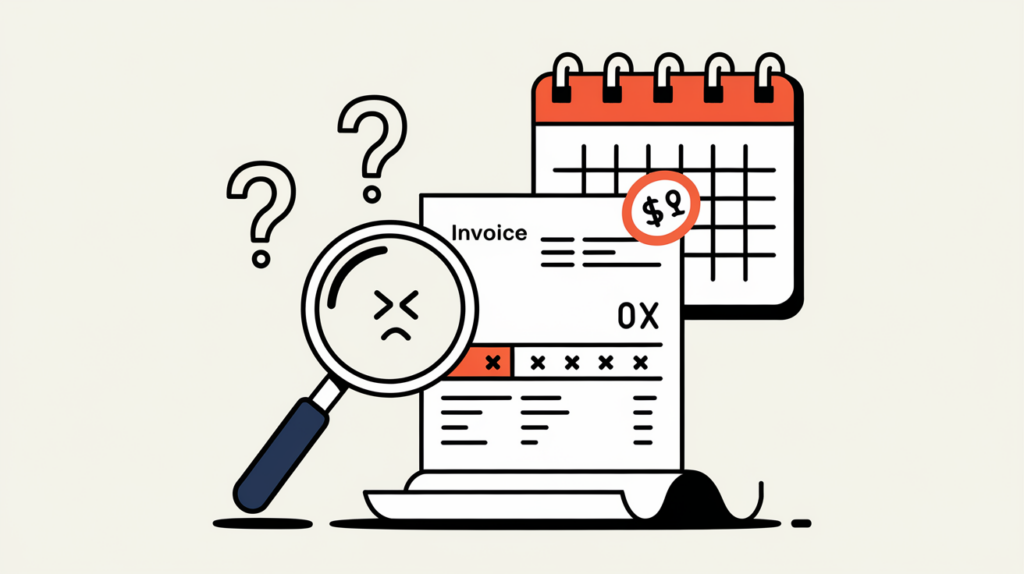When you start a new project, you have numerous responsibilities, from managing costs, timelines, and change orders to keeping the project on track. How you handle these elements directly impacts your company’s profitability and your ability to bid on larger projects in the future. One of the most challenging issues is underbillings. Underbillings occur due to poor management and can negatively affect your cash flow.In this article, we’ll define underbillings, explain their impact on your financial statements, and provide five proven strategies to strengthen your management practices and reduce the risk of underbilling.
What are Underbillings?
Underbilling is the opposite of overbilling and occurs when a contractor completes a certain amount of work during a billing period but does not invoice their customer for the full value of the completed work.
For example, if a contractor has completed 90% of a project but only bills for 60%, they have underbilled by 30% of the total contract value.
Read more: Underbillings Definition | Law Insider
How Underbillings Can Hurt Your Cash Flow
From the perspective of CPAs and bookkeepers, underbillings can make your cash flow appear negative, making it difficult to cover payroll and other expenses.
More importantly, your construction company’s inconsistent financial records will make you a less attractive candidate when seeking financial support to bid on larger projects.
How Bad Project Management Contributes to Underbillings
One of the most common reasons construction companies experience underbillings is the failure to complete progress invoicing on schedule. If a contractor and customer agree to specific billing dates, delays in invoicing can lead to underbillings.
Additionally, poor project management accounting can result in irrecoverable losses. Here are some specific reasons why a contractor may underbill a project:
Underestimate Project Costs
For example, if a contractor estimates that the concrete phase requires 5 workers at $200 each, totaling $10,000, but ends up needing 7 workers, costing $14,000, the extra $4,000 may never be billed to the client.
Accept to Pay Vendors for Work Not Completed
If a contractor agrees to pay a subcontractor $20,000 on March 25, 2020, for window installation not completed by April, they have underbilled their customer for the period from March 1 to March 31, 2020.
Not Having Updated Bills from Vendors
Keeping a list of vendor bills throughout a billing period helps in accurate invoicing. For instance, if a contractor has been charged up to 35.5% of the total project costs, they can adjust their invoices accordingly.
Perform Unsigned/Unapproved Change Orders
Change orders are a significant issue in the construction industry. Without proper approval and documentation, contractors cannot bill for additional work, leading to permanent underbillings.
How You Can Eliminate Underbillings
Underbillings are often unavoidable in the construction industry, but effective management can make a significant difference. Here are five proven strategies to help you eliminate underbillings and maintain a healthy financial position:
- Regular Audits: Conduct regular financial audits to ensure that billings match the work completed. This helps in identifying any underbilling or overbilling early on.
- Accurate Documentation: Maintain precise records of all project-related expenses and revenues. Proper documentation supports accurate billing and helps prevent errors.
- Communication With Stakeholders: Establish clear communication channels with clients and subcontractors. Open discussions about project progress and payments can help align expectations and avoid billing surprises.
- Use Technology: Invest in construction-specific accounting software. These tools can automate many aspects of billing, reducing the risk of human error and ensuring alignment with project milestones.
- Implement Progress Billing and Preliminary Payment Notices: Send preliminary payment notices and use progress billings when possible. These practices help improve cash flow and ensure timely payments.
Additionally, control expenses diligently and document all change orders in writing to prevent unapproved changes that could lead to underbillings.

Conclusion – Underbillings are Not a Good Thing
Construction companies must collaborate and communicate effectively with their clients and accounting staff to plan, control, and make informed decisions throughout the project lifecycle. Keeping up with vendor bills and negotiating with customers to issue invoices and receive payments on time is essential. Ensure that all change orders are signed and approved to prevent unapproved work from causing underbillings.
Sometimes, it may be acceptable to underbill a customer. However, at the end of the project, ensure that there are no net underbillings or overbillings that exceed 2% of total revenue.
There are many subtle nuances involved in construction accounting, including the concepts of overbillings, underbillings, and work in progress. If you have more questions about these concepts or need help implementing them into your bookkeeping and accounting practices, please contact XOA TAX Bookkeeping or book a schedule here.

Frequently Asked Questions
1. How can construction companies ensure they have no net underbillings or overbills at the end of a project?
At the end of the project, make sure there are no net underbills or overbills that exceed 2% of total income. This involves:
- Regular Audits: Conduct regular financial audits to ensure billings match the work completed.
- Accurate Documentation: Maintain precise records of all project-related expenses and revenues.
- Communication With Stakeholders: Establish clear communication channels with clients and subcontractors.
- Use Technology: Invest in construction-specific accounting software.
2. Why is it important to specify the timing for evaluating billing discrepancies?
Specifying the timing ensures that financial assessments are conducted when all project data is available, allowing for accurate reconciliation and financial reporting.
3. How is the acceptable range for billing discrepancies measured?
The acceptable range for billing discrepancies is measured as a percentage of the total revenue, specifically not exceeding 2%.
4. When should the final assessment of billing discrepancies take place?
The final assessment of billing discrepancies should occur at the conclusion of the project to ensure financial accuracy.
5. What specific financial terms are being referred to in the context of billing adjustments?
The terms “underbillings” and “overbills” are used, indicating adjustments related to billing that are either less or more than expected.
6. How can progress billing and preliminary payment notices help manage underbillings?
Progress billing and preliminary payment notices help improve cash flow and ensure timely payments by establishing a structured approach to billing.
7. How can documentation help in managing underbillings?
Proper documentation is critical in avoiding unapproved change orders. By ensuring that all changes and agreements are documented in writing, you can prevent misunderstandings and financial discrepancies.
8. What are the various strategies to manage underbillings?
Strategies to address underbillings include maintaining precise and comprehensive financial records, accurately estimating and adjusting project costs, and controlling expenses diligently.
9. Why is it important to manage underbillings?
Managing underbillings is crucial in the construction industry because they can lead to cash flow issues that disrupt operations and affect overall financial stability.
10. What role do preliminary payment notices and progress billings play within a larger financial strategy?
They help ensure timely payments and provide a structured approach to billing, supporting the overall financial health of your projects.
11. How does keeping updated bills and communication affect invoice creation and payment?
Maintaining current vendor bills and open communication lines with customers allows for timely and accurate invoice creation, facilitating prompt payments and reducing financial discrepancies.
12. What role do updated bills from vendors play in project management?
Updated bills from vendors provide essential financial data that help in tracking expenses, controlling costs, and ensuring accurate financial planning.
13. Why is communication with customers and accounting staff important?
Effective communication ensures that all parties are aligned and working towards the same objectives, which is crucial for planning, controlling, and making informed decisions throughout the project lifecycle.




 anywhere
anywhere  anytime
anytime